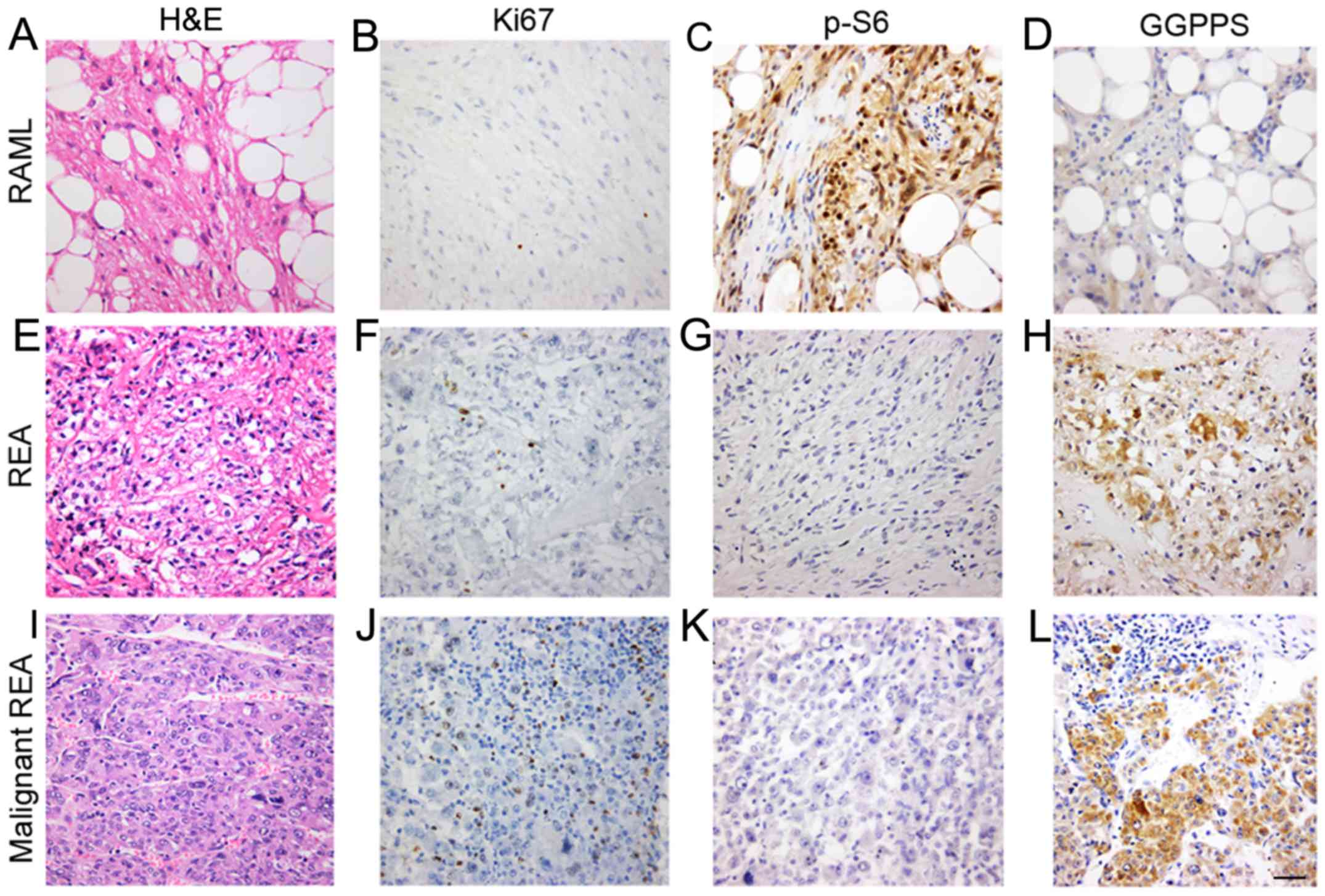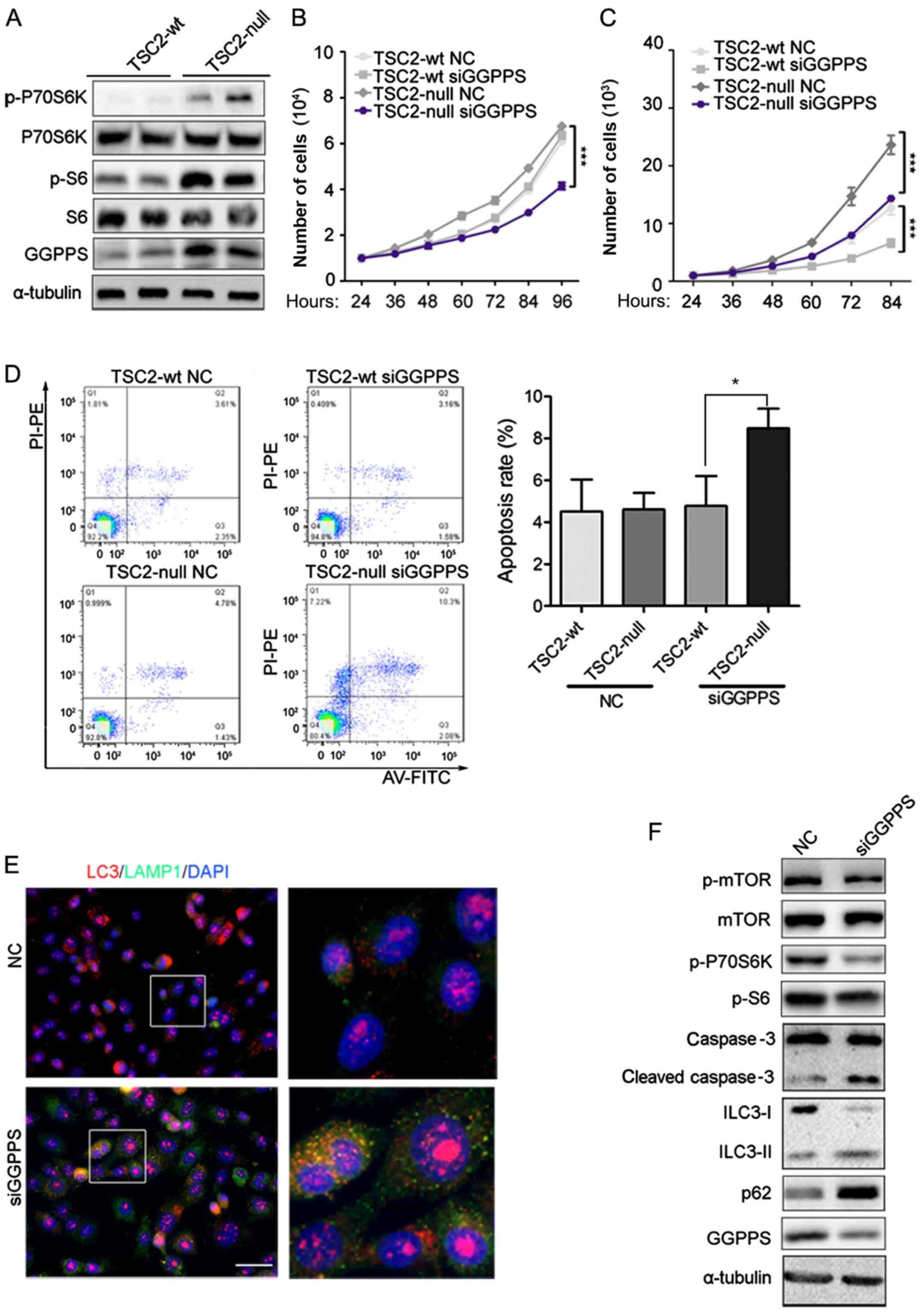|
1
|
Bader-Meunier B, Florkin B, Sibilia J,
Acquaviva C, Hachulla E, Grateau G, Richer O, Farber CM, Fischbach
M, Hentgen V, et al: Mevalonate kinase deficiency: A survey of 50
patients. Pediatrics. 2010:e152–e159. 2011. View Article : Google Scholar
|
|
2
|
Nelson CP and Sanda MG: Contemporary
diagnosis and management of renal angiomyolipoma. J Urol.
168:1315–1325. 2002. View Article : Google Scholar : PubMed/NCBI
|
|
3
|
Yamakado K, Tanaka N, Nakagawa T,
Kobayashi S, Yanagawa M and Takeda K: Renal angiomyolipoma:
Relationships between tumor size, aneurysm formation and rupture.
Radiology. 225:78–82. 2002. View Article : Google Scholar : PubMed/NCBI
|
|
4
|
Boorjian SA, Frank I, Inman B, Lohse CM,
Cheville JC, Leibovich BC and Blute ML: The role of partial
nephrectomy for the management of sporadic renal angiomyolipoma.
Urology. 70:1064–1068. 2007. View Article : Google Scholar : PubMed/NCBI
|
|
5
|
Soulen MC, Faykus MH Jr, Shlansky-Goldberg
RD, Wein AJ and Cope C: Elective embolization for prevention of
hemorrhage from renal angiomyolipomas. J Vasc Interv Radiol.
5:587–591. 1994. View Article : Google Scholar : PubMed/NCBI
|
|
6
|
Yip SK, Tan PH, Cheng WS, Li MK and Foo
KT: Surgical management of angiomyolipoma: Nephron-sparing surgery
for symptomatic tumour. Scand J Urol Nephrol. 34:32–35. 2000.
View Article : Google Scholar : PubMed/NCBI
|
|
7
|
Aydin H, Magi-Galluzzi C, Lane BR, Sercia
L, Lopez JI, Rini BI and Zhou M: Renal angiomyolipoma:
Clinicopathologic study of 194 cases with emphasis on the
epithelioid histology and tuberous sclerosis association. Am J Surg
Pathol. 33:289–297. 2009. View Article : Google Scholar : PubMed/NCBI
|
|
8
|
Varma S, Gupta S, Talwar J, Forte F and
Dhar M: Renal epithelioid angiomyolipoma: A malignant disease. J
Nephrol. 24:18–22. 2011. View Article : Google Scholar : PubMed/NCBI
|
|
9
|
Wolff N, Kabbani W, Bradley T, Raj G,
Watumull L and Brugarolas J: Sirolimus and temsirolimus for
epithelioid angiomyolipoma. J Clin Oncol. 28:e65–e68. 2010.
View Article : Google Scholar : PubMed/NCBI
|
|
10
|
Bissler JJ, McCormack FX, Young LR, Elwing
JM, Chuck G, Leonard JM, Schmithorst VJ, Laor T, Brody AS, Bean J,
et al: Sirolimus for angiomyolipoma in tuberous sclerosis complex
or lymphangioleiomyomatosis. N Engl J Med. 358:140–151. 2008.
View Article : Google Scholar : PubMed/NCBI
|
|
11
|
Pan CC, Chung MY, Ng KF, Liu CY, Wang JS,
Chai CY, Huang SH, Chen PC and Ho DM: Constant allelic alteration
on chromosome 16p (TSC2 gene) in perivascular epithelioid cell
tumour (PEComa): Genetic evidence for the relationship of PEComa
with angiomyolipoma. J Pathol. 214:387–393. 2008. View Article : Google Scholar : PubMed/NCBI
|
|
12
|
Xu N, Shen N, Wang X, Jiang S, Xue B and
Li C: Protein prenylation and human diseases: A balance of protein
farnesylation and geranylgeranylation. Sci China Life Sci.
58:328–335. 2015. View Article : Google Scholar : PubMed/NCBI
|
|
13
|
Xu N, Guan S, Chen Z, Yu Y, Xie J, Pan FY,
Zhao NW, Liu L, Yang ZZ, Gao X, et al: The alteration of protein
prenylation induces cardiomyocyte hypertrophy through Rheb-mTORC1
signalling and leads to chronic heart failure. J Pathol.
235:672–685. 2015. View Article : Google Scholar : PubMed/NCBI
|
|
14
|
Goncharova EA, Goncharov DA, Li H, Pimtong
W, Lu S, Khavin I and Krymskaya VP: mTORC2 is required for
proliferation and survival of TSC2-null cells. Mol Cell Biol.
31:2484–2498. 2011. View Article : Google Scholar : PubMed/NCBI
|
|
15
|
Wasko BM, Dudakovic A and Hohl RJ:
Bisphosphonates induce autophagy by depleting geranylgeranyl
diphosphate. J Pharmacol Exp Ther. 337:540–546. 2011. View Article : Google Scholar : PubMed/NCBI
|
|
16
|
Lin JF, Lin YC, Lin YH, Tsai TF, Chou KY,
Chen HE and Hwang TI: Zoledronic acid induces autophagic cell death
in human prostate cancer cells. J Urol. 185:1490–1496. 2011.
View Article : Google Scholar : PubMed/NCBI
|
|
17
|
Burke C and Croteau R: Geranyl diphosphate
synthase from Abies grandis: cDNA isolation, functional expression
and characterization. Arch Biochem Biophys. 405:130–136. 2002.
View Article : Google Scholar : PubMed/NCBI
|
|
18
|
Lopez-Beltran A, Scarpelli M, Montironi R
and Kirkali Z: 2004 WHO classification of the renal tumors of the
adults. Eur Urol. 49:798–805. 2006. View Article : Google Scholar : PubMed/NCBI
|
|
19
|
Lopez-Beltran A, Carrasco JC, Cheng L,
Scarpelli M, Kirkali Z and Montironi R: 2009 update on the
classification of renal epithelial tumors in adults. Int J Urol.
16:432–443. 2009. View Article : Google Scholar : PubMed/NCBI
|
|
20
|
Soslow RA, Dannenberg AJ, Rush D, Woerner
BM, Khan KN, Masferrer J and Koki AT: COX-2 is expressed in human
pulmonary, colonic and mammary tumors. Cancer. 89:2637–2645. 2000.
View Article : Google Scholar : PubMed/NCBI
|
|
21
|
Ooi SM, Vivian JB and Cohen RJ: The use of
the Ki-67 marker in the pathological diagnosis of the epithelioid
variant of renal angiomyolipoma. Int Urol Nephrol. 41:559–565.
2009. View Article : Google Scholar : PubMed/NCBI
|
|
22
|
Sato K, Ueda Y, Tachibana H, Miyazawa K,
Chikazawa I, Kaji S, Nojima T and Katsuda S: Malignant epithelioid
angiomyolipoma of the kidney in a patient with tuberous sclerosis:
An autopsy case report with p53 gene mutation analysis. Pathol Res
Pract. 204:771–777. 2008. View Article : Google Scholar : PubMed/NCBI
|
|
23
|
Goncharova EA, Goncharov DA, Li H, Pimtong
W, Lu S, Khavin I and Krymskaya VP: mTORC2 is required for
proliferation and survival of TSC2-null cells. Mol Cell Biol.
31:2484–2498. 2011. View Article : Google Scholar : PubMed/NCBI
|
|
24
|
Kim J, Kundu M, Viollet B and Guan KL:
AMPK and mTOR regulate autophagy through direct phosphorylation of
Ulk1. Nat Cell Biol. 13:132–141. 2011. View
Article : Google Scholar : PubMed/NCBI
|
|
25
|
Smolarek TA, Wessner LL, McCormack FX,
Mylet JC, Menon AG and Henske EP: Evidence that
lymphangiomyomatosis is caused by TSC2 mutations: Chromosome 16p13
loss of heterozygosity in angiomyolipomas and lymph nodes from
women with lymphangiomyomatosis. Am J Hum Genet. 62:810–815. 1998.
View Article : Google Scholar : PubMed/NCBI
|
|
26
|
Coombs EJ: Role of mTOR inhibition in the
treatment of patients with renal angiomyolipomas. J Am Assoc Nurse
Pract. 25:588–596. 2013.PubMed/NCBI
|
|
27
|
Sinensky M and Lutz RJ: The prenylation of
proteins. Bioessays. 14:25–31. 1992. View Article : Google Scholar : PubMed/NCBI
|
|
28
|
Konstantinopoulos PA, Karamouzis MV and
Papavassiliou AG: Post-translational modifications and regulation
of the RAS superfamily of GTPases as anticancer targets. Nat Rev
Drug Discov. 6:541–555. 2007. View
Article : Google Scholar : PubMed/NCBI
|
|
29
|
Yu DC, Liu J, Chen J, Shao JJ, Shen X, Xia
HG, Li CJ, Xue B and Ding YT: GGPPS1 predicts the biological
character of hepatocellular carcinoma in patients with cirrhosis.
BMC cancer. 14:2482014. View Article : Google Scholar : PubMed/NCBI
|
|
30
|
Patel S, Mason RM, Suzuki J, Imaizumi A,
Kamimura T and Zhang Z: Inhibitory effect of statins on renal
epithelial-to-mesenchymal transition. Am J Nephrol. 26:381–387.
2006. View Article : Google Scholar : PubMed/NCBI
|
|
31
|
Konosu-Fukaya S, Nakamura Y, Fujishima F,
Kasajima A, McNamara KM, Takahashi Y, Joh K, Saito H, Ioritani N,
Ikeda Y, et al: Renal epithelioid angiomyolipoma with malignant
features: Histological evaluation and novel immunohistochemical
findings. Pathol Int. 64:133–141. 2014. View Article : Google Scholar : PubMed/NCBI
|
|
32
|
Demierre MF, Higgins PD, Gruber SB, Hawk E
and Lippman SM: Statins and cancer prevention. Nat Rev Cancer.
5:930–942. 2005. View
Article : Google Scholar : PubMed/NCBI
|
|
33
|
Hillner BE, Ingle JN, Berenson JR, Janjan
NA, Albain KS, Lipton A, Yee G, Biermann JS, Chlebowski RT and
Pfister DG: American Society of Clinical Oncology guideline on the
role of bisphosphonates in breast cancer. American Society of
Clinical Oncology Bisphosphonates Expert Panel. J Clin Oncol.
18:1378–1391. 2000. View Article : Google Scholar : PubMed/NCBI
|
|
34
|
Pavlakis N and Stockler M: Bisphosphonates
for breast cancer. Cochrane Database Syst Rev. CD003474. 2002.
View Article : Google Scholar : PubMed/NCBI
|
















